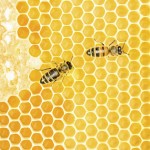
Tag Archives Bee

Surprisingly few ‘busy bees’ make global crops grow
Conservation of wild pollinators can’t be based on economics alone

Growing a 4-H garden you can ‘Bee Proud’ of
4-H clubs can get free seeds to plant pollinator-friendly gardens

Editorial: The buzz around bees, neonics and the ‘big picture’

Shorter winter favours honeybees
Some high overwintering losses may be attributed to inexperience and not the winter weather

Neonics are in the picture, but they’re not the whole picture
The varroa mite is still the top concern for beekeepers, in the eyes of one expert, but other factors can’t be ignored either

RCMP investigating after bees poisoned
A Manitoba beekeeper is out thousands of dollars after his bees were the target of truly poisonous wrath

Video: Exhibit shows pollination isn’t only done by bees
Museum curator Diana Bizecki Robson hopes it helps public deepen their understanding of all types of pollinators and to take actions that help these organisms thrive

The neonic debate: science or sensationalism?
Laying the blame for a collection of environmental issues at the feet of a single technology is very convenient, but hugely overly simplistic

Bee foraging chronically impaired by pesticide exposure
Another study sheds light on why neonicotinoids and bees don’t mix

Honey farmers named Red River Ex Farm Family of the Year
Starbuck-area producers Phil Veldhuis and Vona Guiler embrace a modern model of Manitoba homesteading


